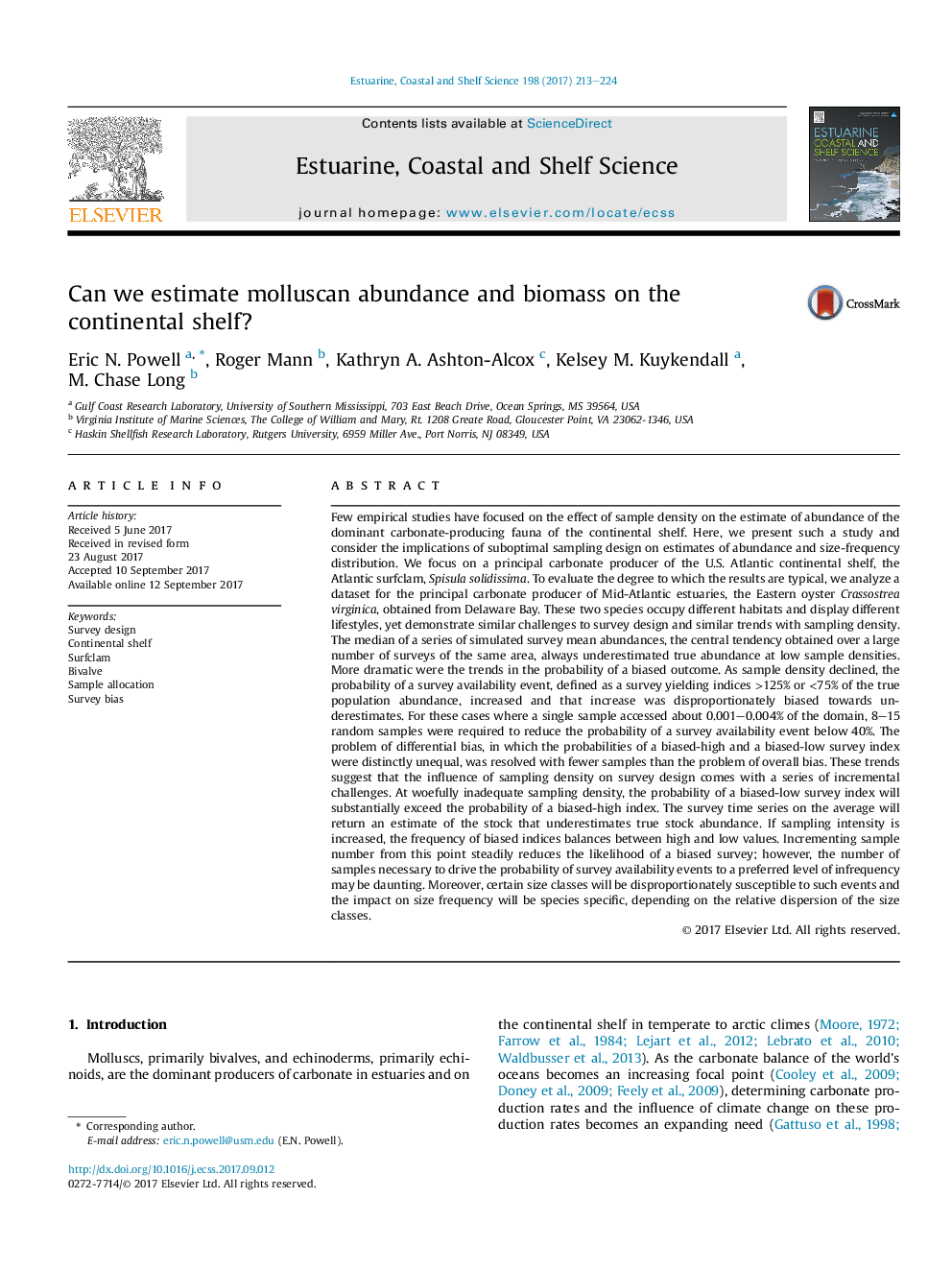| کد مقاله | کد نشریه | سال انتشار | مقاله انگلیسی | نسخه تمام متن |
|---|---|---|---|---|
| 5765309 | 1413066 | 2017 | 12 صفحه PDF | دانلود رایگان |
عنوان انگلیسی مقاله ISI
Can we estimate molluscan abundance and biomass on the continental shelf?
ترجمه فارسی عنوان
آیا می توانیم فراوانی مولکول ها و زیست توده را در قفسه قاره برآورد کنیم؟
دانلود مقاله + سفارش ترجمه
دانلود مقاله ISI انگلیسی
رایگان برای ایرانیان
کلمات کلیدی
موضوعات مرتبط
مهندسی و علوم پایه
علوم زمین و سیارات
زمین شناسی
چکیده انگلیسی
Few empirical studies have focused on the effect of sample density on the estimate of abundance of the dominant carbonate-producing fauna of the continental shelf. Here, we present such a study and consider the implications of suboptimal sampling design on estimates of abundance and size-frequency distribution. We focus on a principal carbonate producer of the U.S. Atlantic continental shelf, the Atlantic surfclam, Spisula solidissima. To evaluate the degree to which the results are typical, we analyze a dataset for the principal carbonate producer of Mid-Atlantic estuaries, the Eastern oyster Crassostrea virginica, obtained from Delaware Bay. These two species occupy different habitats and display different lifestyles, yet demonstrate similar challenges to survey design and similar trends with sampling density. The median of a series of simulated survey mean abundances, the central tendency obtained over a large number of surveys of the same area, always underestimated true abundance at low sample densities. More dramatic were the trends in the probability of a biased outcome. As sample density declined, the probability of a survey availability event, defined as a survey yielding indices >125% or <75% of the true population abundance, increased and that increase was disproportionately biased towards underestimates. For these cases where a single sample accessed about 0.001-0.004% of the domain, 8-15 random samples were required to reduce the probability of a survey availability event below 40%. The problem of differential bias, in which the probabilities of a biased-high and a biased-low survey index were distinctly unequal, was resolved with fewer samples than the problem of overall bias. These trends suggest that the influence of sampling density on survey design comes with a series of incremental challenges. At woefully inadequate sampling density, the probability of a biased-low survey index will substantially exceed the probability of a biased-high index. The survey time series on the average will return an estimate of the stock that underestimates true stock abundance. If sampling intensity is increased, the frequency of biased indices balances between high and low values. Incrementing sample number from this point steadily reduces the likelihood of a biased survey; however, the number of samples necessary to drive the probability of survey availability events to a preferred level of infrequency may be daunting. Moreover, certain size classes will be disproportionately susceptible to such events and the impact on size frequency will be species specific, depending on the relative dispersion of the size classes.
ناشر
Database: Elsevier - ScienceDirect (ساینس دایرکت)
Journal: Estuarine, Coastal and Shelf Science - Volume 198, Part A, 5 November 2017, Pages 213-224
Journal: Estuarine, Coastal and Shelf Science - Volume 198, Part A, 5 November 2017, Pages 213-224
نویسندگان
Eric N. Powell, Roger Mann, Kathryn A. Ashton-Alcox, Kelsey M. Kuykendall, M. Chase Long,
